Lebensqualität, Co-creation und Beteiligung im Fokus
Südkorea zu Besuch
Am 4. März 2024 besuchte eine Delegation aus Südkorea das EU-Projekt Smarter Together in Simmering. Ziel war es, im Rahmen eines Grätzlspaziergangs Inspirationen für die eigenen Aktivitäten im Bereichen Innovation und Strukturwandel zu bekommen. Für Smarter Together und Wien ist dieses Interesse, so lange nach Abschluss des Projektes 2021, doch auch eine Auszeichnung für sich.
Ausgangspunkt des Austausches war, dass Südkorea eine der weltweit niedrigsten Geburtenraten von unter 0,7 aufweist, wobei erst bei einem Wert von 2,1 eine stabile Bevölkerungsentwicklung gewährleistet ist. Das hat große Auswirkungen auf die langfristigen Entwicklungspotentiale der Gesellschaft sowie der Wirtschaft.
Die Projektpräsentation zentrierte sich deshalb um die drei Themenbereiche Lebensqualität, Co-Creation und Beteiligung, die auch einen positiven Beitrag zu Lösung der aktuellen zentralen gesellschaftlichen Herausforderungen leisten.
Südkoreanische Besuchergruppe bei Projektspaziergang zu Smarter Together in Simmering
Lebensqualität
Die Wiener Smart Klima City Rahmenstrategie setzt auf die drei Bereiche „Ressourcen“, „Innovation“ und „Lebensqualität“. Damit weist sie im Vergleich zu vielen anderen Smart City Strategien einen zentralen Mehrwert auf, nämlich Lebensqualität als zentrale Entwicklungsachse. Damit ist gewährleistet, dass der Mensch im Mittelpunkt aller Politikbereiche der Stadt steht. Nicht umsonst in Wien seit einem Jahrzehnt eine der lebenswertesten Städte weltweit. Die Attraktivität der Stadt für die Bewohner*innen ist auch von zentraler Bedeutung für die Entwicklungsdynamik auch in wirtschaftlicher Hinsicht. Dazu tragen insbesondere ein hoher Anteil an gefördertem und damit leistbaren Wohnen und hohe Lebensqualität für breite Bevölkerungsschichten Dank eines attraktiven öffentlichen Verkehrs oder zahlreicher konsumfreier Grünräume bei. Auch der Universitäts- und Bildungsstandort Wien hat einen wichtigen Anteil an der Attraktivität für jungen Menschen, die zunächst hier studieren und dann ihr Leben lang hier kreativ und wirtschaftlich zur Entwicklung der Stadt beitragen.
Siehe dazu smarter-together-fest-in-der-scwr-verankert/
Smarter Together hat etwa durch den Schulerweiterungsbau am Enkplatz genau dazu beigetragen und gleichzeitig technologische Innovationen gefördert. Überhaupt waren die Bewohner*innen stets im Fokus der Aufmerksamkeit und eigentlich stellte jedes der über 40 Einzelprojekte den Menschen in den Mittelpunkt: bei den Wohnhaussanierungen ebenso wie beim Schulerweiterungsbau oder bei den Mobilitätslösungen. Mit Beat the Street wurde überhaupt ein Mobilitätsspiel im Bezirk umgesetzt, bei dem im ersten Jahr an die 6.000, im zweiten aufgrund geringerer Ressourcen immerhin noch ca. 3.000 Bewohner*innen teilgenommen hatten. Motto: Entdecke deinen Bezirk im Spazierengehen oder per Rad.
Siehe dazu beat-the-street-2017/
Co-Creation
Smarter Together hat sich als Reallabor für ko-kreative Prozesse verstanden. Vernetzt wurden einerseits Fachleute aus unterschiedlichen Fachbereichen aus Wirtschaft, Forschung und Verwaltung. Damit wurde eine interdisziplinäre Projektentwicklung gefördert. Allein durch diese ko-kreativen Prozesse konnten zahlreiche zusätzliche Impulse für Innovationen gesetzt werden. Die Ko-Kreation/co-creation brachte viele inspirierende Projektideen und Projekte hervor, die durch rein hierarchischen Umsetzens von Vorgaben nicht möglich gewesen wären.
Diese Co-creation erwies sich auch als höchst motivierend für alle Projektteilnehmer*innen und beflügelte sie gleichsam, über sich hinaus zu wachsen und zusätzliche Projekte und Ergebnisse zu generieren.
Siehe dazu urban-living-labs-im-fokus/
Co-Creation mit Bewohner*innen war auch bei den „technischen“ Projekten immer ein wichtiges Instrument der Innovationen.
So wurden die Arbeiter*innen bei Siemens Mobility Werk am Leberberg bei der Einführung der E-Gabelstapler einbezogen und konnten bei der Modellwahl mitentscheiden. Aufgrund der tollen Erfahrungen wurde diese ko-kreative Methode auch bei allen weiteren Innovationsschritten angewendet.
Siehe dazu e-gabelstapler-bei-siemens/
Das im Pilot gemeinsam mit den Bewohner*innen der BWSG-Wohnhausanlage in der Hauffgasse entwickelte E-Carsharing bildete die Grundlage einerseits für eine neue Förderschiene der Stadt Wien für E-Carsharing im sozialen Wohnbau und andererseits für das nach Abschluss des Projektes angebotene Geschäftsmodell des E-Carsharing in der Wohnhausanlage.
Siehe dazu sharetoo-carsharing/ , eine-klimaaktiv-best-practice/ , mobilitaetsmassnahmen-im-wohnbau/ ,
grosse-foerderoffensive-fuer-energieeffiziente-mobilitaet-gestartet/
Die Ideen und Wünsche der Schüler*innen zu ihrer Wunschschule der Zukunft wurden von den Architekt*innen Burtscher&Durig aufgenommen und in die Planungen integriert. So erhielten die Schüler*innen eine Bolderwand und die Schule wurde bunt (aber nicht in rosa). Das Ergebnis ist eine Vorzeigeschule für ganz Wien.
Siehe dazu nms-enkplatz-lust-auf-schule/
Beteiligung
Ein zentraler Projektauftrag von Smarter Together war es auch, die Beteiligung der Bewohner*innen auf allen Ebenen zu ermöglichen und zu stärken. Auch diese hat entscheidend zum Projekterfolg beigetragen. Dabei reichte die Beteiligung von einfacher Information über Befragungen, Workshops, spielerischen Elementen (Gamification) bis hin zu Mitgestaltung (Co-creation), Mitentscheidungen (Co-decision) und Umsetzung von Projekten.
Von zentraler Bedeutung dabei waren die vielen lokalen Einrichtungen, die mit ihrem Netzwerkwissen die lokalen Beteiligungsprozesse entscheidend mitgestaltet und umgesetzt haben. Freilich war da die Gebietsbetreuung Stadterneuerung (GB*), die das SIMmobil über den gesamten Projektzeitraum vor Ort und an zahlreichen Standorten einsetzte.
Im Gemeindebau waren es die Wohnpartner, in der BWSG-Wohnhausanlage Hauffgasse 37-47 die wohnbund:consult. Auch die Streetworker von Balu&Du https://www.balu.wien/home.html und DIE UMWELTBERATUNG seien hier für zahlreiche andere erwähnt.
Siehe dazu
sozialraumanalyse-hoerbigergruende/
Die intensive Beteiligung aller Bewohner*innen war ganz wesentlich für den Projekterfolg. Sie sicherte nicht nur die notwendige Transparenz sondern auch die Verankerung des Projektes in der Lebensrealität des Alltags der Menschen. Sie war auch Motivator für die zahlreichen Projektpartner mehr und bessere Ergebnisse zu produzieren und diese an den Bedürfnissen der Menschen zu messen.
Dieser Ansatz wurde im Nachfolgeprogramm zu Smarter Together, dem Stadterneuerungsprogramm WieNeu+ wieder aufgenommen.
Siehe dazu wieneuplus.wien.gv.at/
Insgesamt ein spannender Grätzlspaziergang mit viel Inspiration zur Reflexion.
English Summary / Zusammenfassung in Englisch:
South Korea on a visit
Focus on quality of life, co-creation and participation On 4 March 2024, a delegation from South Korea visited the EU project Smarter Together in Simmering. The aim was to gain inspiration for their own activities in the areas of innovation and structural change as part of a neighbourhood walk. For Smarter Together and Vienna, this interest, so long after the conclusion of the 2021 project, is an honour in itself. The starting point of the exchange was that South Korea has one of the lowest birth rates in the world at under 0.7, with a stable population development only being guaranteed at a value of 2.1. This has a major impact on the long-term development potential of society and the economy. The project presentation therefore centred on the three topics of quality of life, co-creation and participation, which also make a positive contribution to the solution of current central societal challenges. Quality of life The Vienna Smart Climate City Framework Strategy focuses on the three areas of „resources“, „innovation“ and „quality of life“. Compared to many other Smart City strategies, it therefore has a key added value, namely quality of life as a central development axis. This ensures that people are at the centre of all policy areas in the city. It is not for nothing that Vienna has been one of the most liveable cities in the world for a decade. The attractiveness of the city for its residents is also of central importance for its dynamic development, including in economic terms. In particular, a high proportion of subsidised and therefore affordable housing and a high quality of life for broad sections of the population thanks to attractive public transport and numerous consumer-free green spaces contribute to this. Vienna as a university and education centre also plays an important role in attracting young people, who first study here and then spend their lives contributing creatively and economically to the city’s development. See also smarter-together-fest-in-der-scwr-verankert/ Smarter Together has contributed to this with the school extension on Enkplatz, for example, while also promoting technological innovation. In general, residents were always the focus of attention and each of the more than 40 individual projects actually placed people at the centre: in the renovation of residential buildings as well as in the construction of school extensions and mobility solutions. With Beat the Street, a mobility game was realised in the district, in which around 6,000 residents took part in the first year and around 3,000 in the second due to fewer resources. Motto: Discover your district on foot or by bike. See also beat-the-street-2017/ Co-Creation Smarter Together saw itself as a real-world laboratory for co-creative processes. On the one hand, it brought together experts from various specialist areas in business, research and administration. This promoted interdisciplinary project development. These co-creative processes alone provided numerous additional impulses for innovation. Co-creation produced many inspiring project ideas and projects that would not have been possible through the purely hierarchical realisation of specifications. This co-creation also proved to be highly motivating for all project participants, inspiring them to surpass themselves and generate additional projects and results. See also urban-living-labs-im-fokus/ Co-creation with residents has also always been an important instrument of innovation in the „technical“ projects. For example, the workers at Siemens Mobility factory Leberberg were involved in the introduction of electric forklift trucks and were able to help decide on the model. This co-creative method was also used for all further innovation steps due to the great experiences. See also e-gabelstapler-bei-siemens/ The e-car sharing developed in the pilot together with the residents of the BWSG residential complex in Hauffgasse formed the basis for a new City of Vienna funding programme for e-car sharing in social housing on the one hand and for the e-car sharing business model offered in the residential complex after completion of the project on the other. See also sharetoo-carsharing/ , eine-klimaaktiv-best-practice/ , mobilitaetsmassnahmen-im-wohnbau/ , grosse-foerderoffensive-fuer-energieeffiziente-mobilitaet-gestartet/ The ideas and wishes of the pupils for their dream school of the future were taken on board by the architects Burtscher&Durig and integrated into the plans. The pupils were given a Bolder wall and the school became colourful (but not pink). The result is a model school for the whole of Vienna. See also nms-enkplatz-lust-auf-schule Participation A central project mission of Smarter Together was also to enable and strengthen the participation of residents at all levels. This also made a decisive contribution to the success of the project. Participation ranged from simple information, surveys, workshops and playful elements (gamification) to co-creation, co-decision and project implementation. Of central importance here were the many local organisations that played a decisive role in shaping and implementing the local participation processes with their network knowledge. Of course, there was the urban regeneration area management (GB*) https://www.gbstern.at/ , which used the SIMmobil on site and at numerous locations throughout the entire project period. Smarter-Together_Factsheets_PARTIZIPATION_SIMmobil.pdf In the municipal housing estate it was Wohnpartner, in the BWSG housing estate it was wohnbund:consult. The street workers from Balu&Du and the environmental counselling service DIE UMWELTBERATUNG should also be mentioned here on behalf of many others. See also sozialraumanalyse-hoerbigergruende/ The intensive participation of all residents was essential for the success of the project. It not only ensured the necessary transparency but also anchored the project in the reality of people’s everyday lives. It was also a motivator for the numerous project partners to produce more and better results and to measure these against the needs of the people. This approach was taken up again in the follow-up programme to Smarter Together, the Wieneu+ urban renewal programme. All in all, an exciting neighbourhood walk with plenty of inspiration for reflection.
Bojan Schnabl
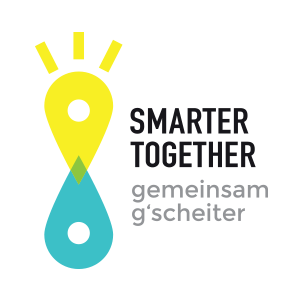
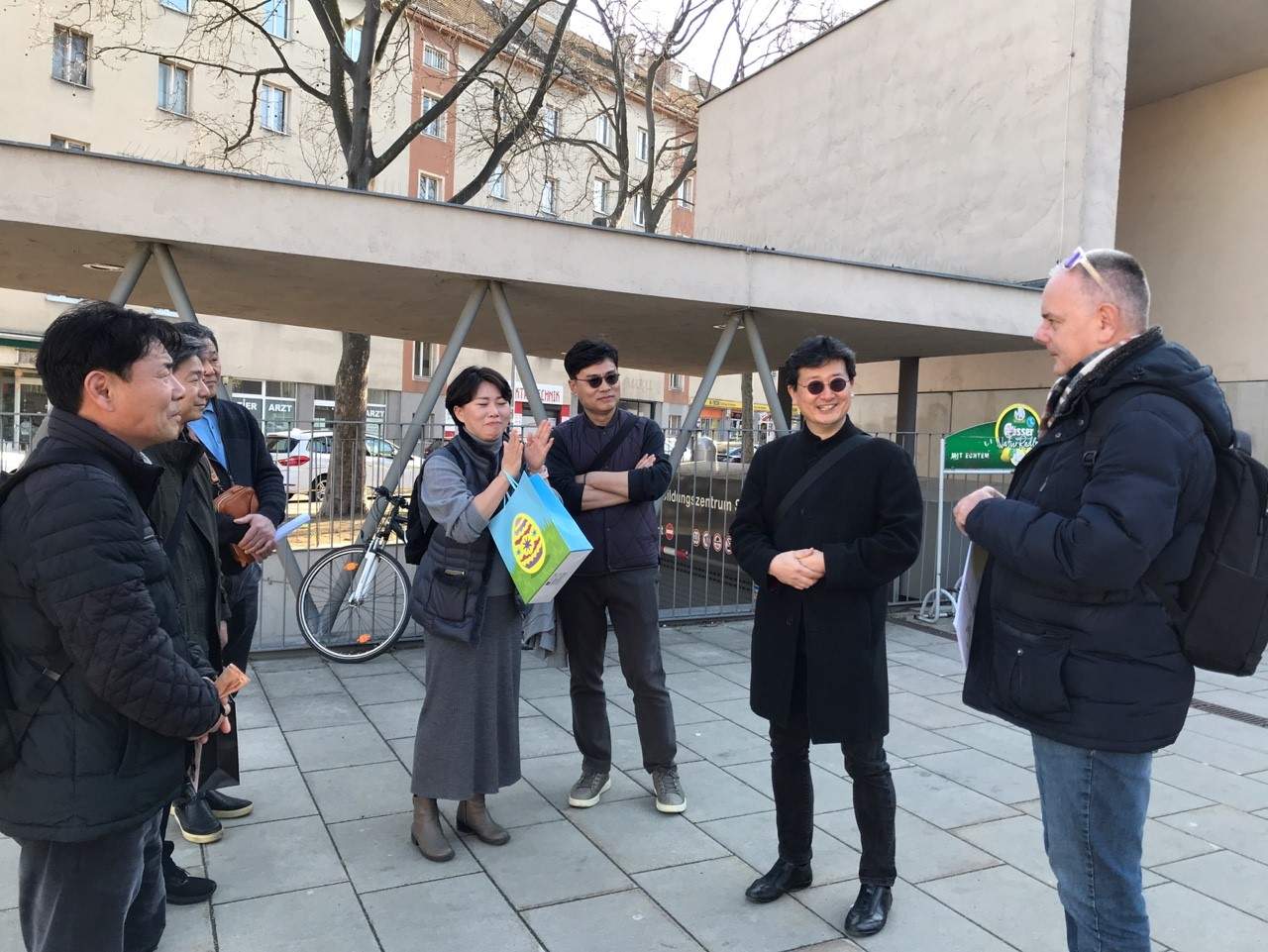
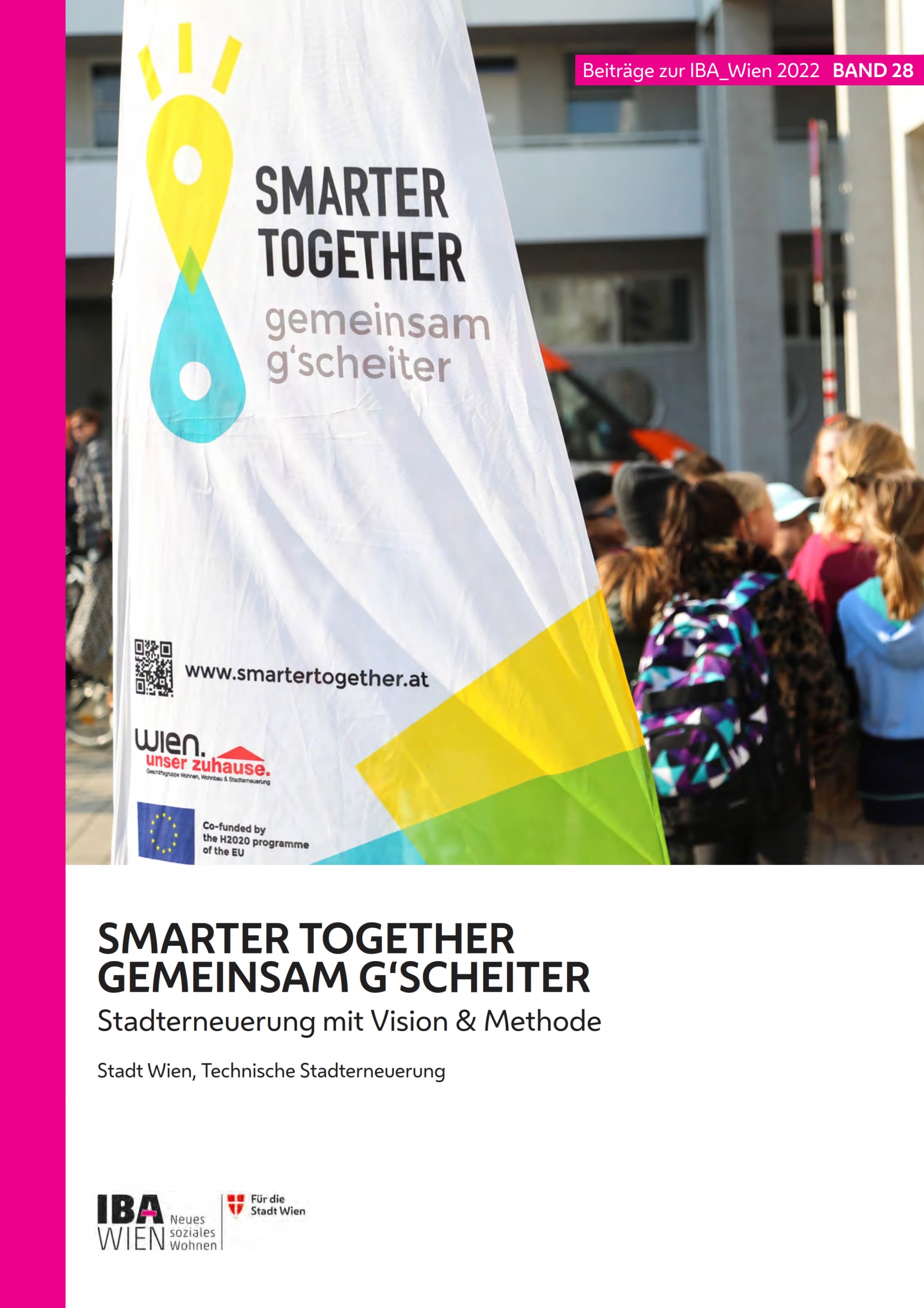
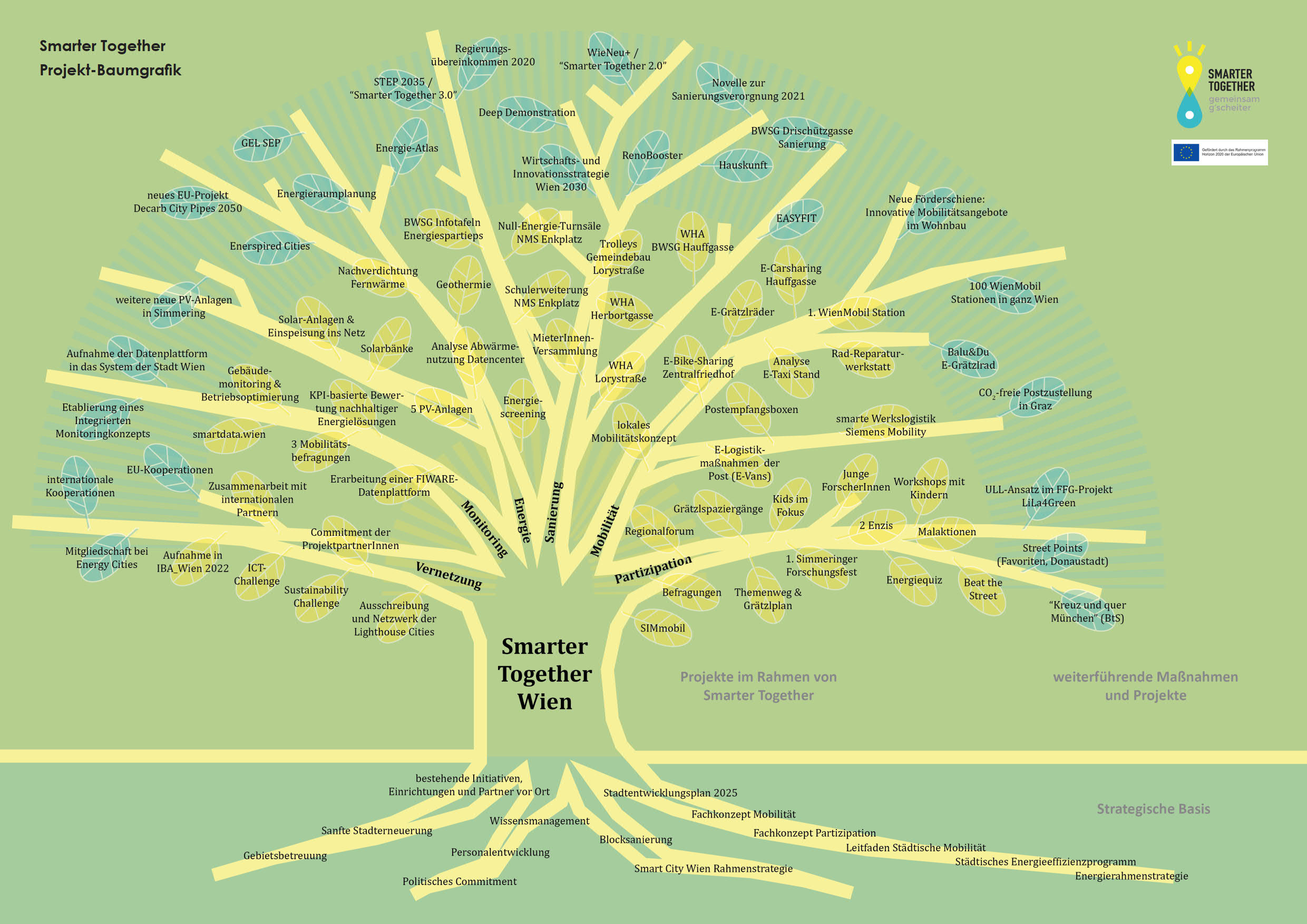
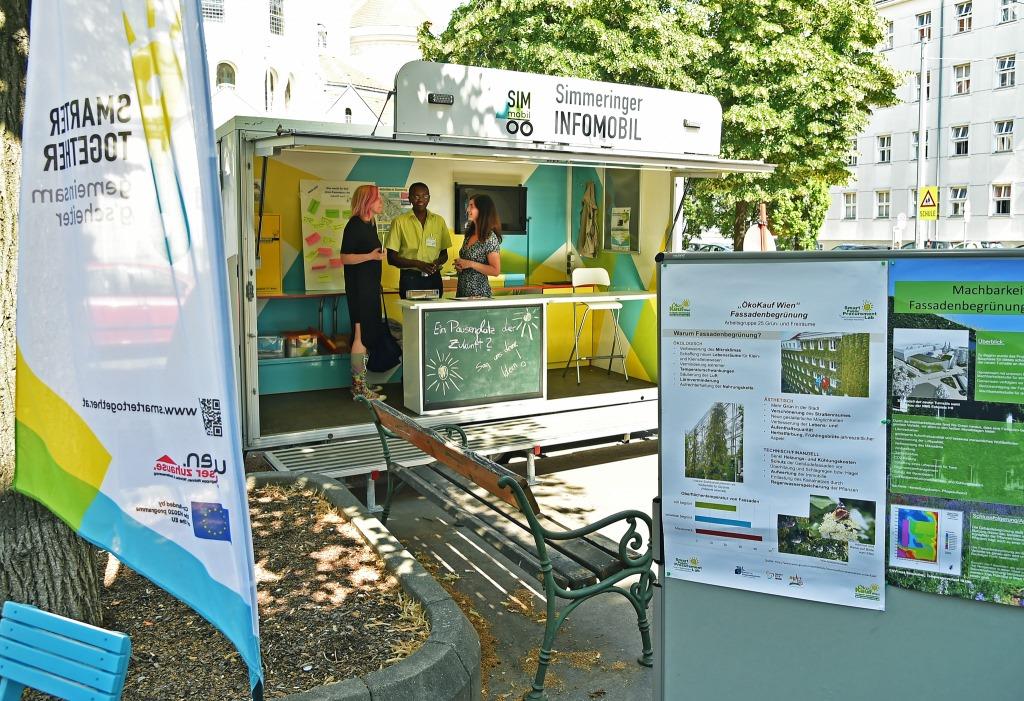
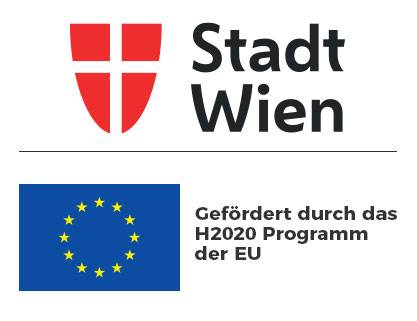
 Scale
Scale European Union, 2024
European Union, 2024